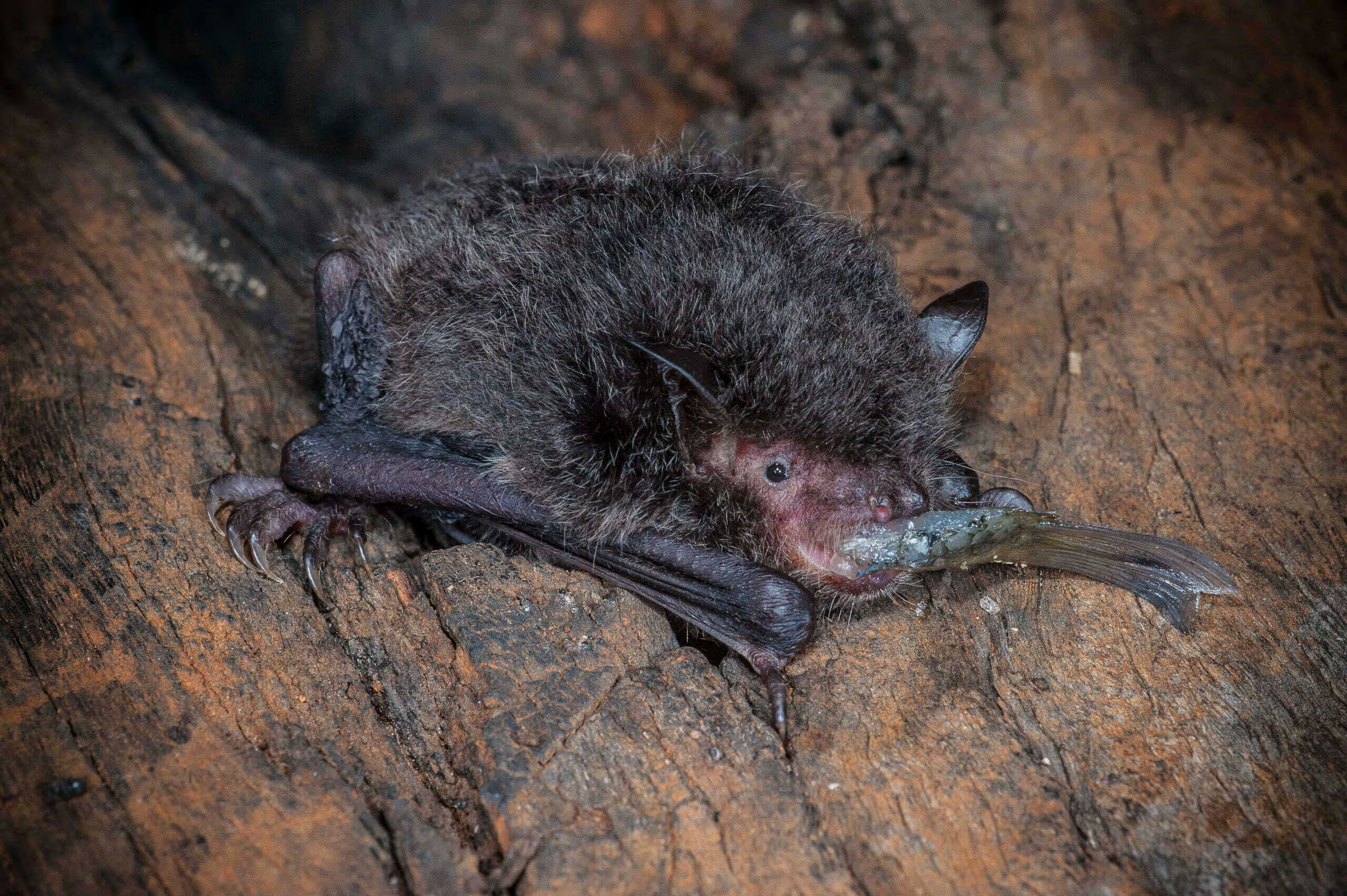Freshwater ecosystems are home to a huge diversity of plants and animals. Often overlooked but always close by, bats are common visitors to our wetlands. Charles Sturt University has been monitoring bats and their responses to environmental water delivery since 2021 as part of the Murrumbidgee Flow-MER project.
Bats are the only mammals capable of true and sustained flight. Australia is home to over 90 species of bat which are divided into two key groups; the largely fruit-eating megabats which include fruit bats and flying foxes, and the echolocating microbats that are mostly insectivores.


Using combined acoustic and ultrasonic call recorders, we monitored bat activity at ten wetland sites in the Yanco Creek System. Although not detectable to humans, bats are noisy animals. They emit sounds during searching and attack phases, a buzz when feeding and social calls. Like many bird species, bats can also be identified based upon their unique calls, which are detected with our ultrasonic recorders. To do this we visualise the shape and frequency of the call using a specialised spectrogram viewer called Kaleidoscope Pro, from Wildlife Acoustics in Maynard, USA.
Bat monitoring for our area is led by Dr Sarah Talbot and has so far detected seven bat species in the Yanco-Billabong Creek system including chocolate wattled bat (Chalinolobus morio), Gould’s wattled bat (Chalinolobus gouldii), lesser long-eared bat (Nyctophilus geoffroyii), little forest bat (Vespadelus vulturnus), southern forest bat (Vespadelus regulus), white striped free-tailed bat (Austronomus australis) and wetland specialists southern myotis (Myotis Macropus; Vulnerable NSW), which is also known as the Fisher bat. All bats identified in the Yanco Creek system are primarily insectivores, but the southern myotis is also skilled at catching small fish from just below the water’s surface.

The importance of wetlands for bats
Wetlands and riverine environments are ecological hotspots that provide excellent habitat for bats to forage, while the tall river red gum forests provide hollows and loose bark where bats can shelter during the day. While all bats can benefit from the boost in productivity that comes with wetland inundation and the provision of permanent water that provides refuge during dry times, the southern myotis is entirely dependent on water for foraging. Using its large feet to grasp insects and small fish directly from the water’s surface, the southern myotis requires healthy productive freshwater systems to maintain an adequate food supply. The southern myotis roosts in small colonies that can occur in tree hollows and under bridges, culverts and drains. Colonies are always near permanent water, which means that the loss of permanent water can have a big impact on the survival of this species.
Delivery of water for the environment to key wetlands in the Yanco Creek system supports resident bat species by maintaining tree condition and wetland health, and providing food for resident bat species during key activity periods of spring and summer. Work under the Flow-MER program to identify which bat species are visiting wetlands and their habitat requirements can help to inform decisions around the delivery of water for the environment.
Bats are just one of the many species recorded in the Yanco Creek system. For more information on recent work in Yanco Creek, please see the 2021-22 Yanco Creek System Community Report.





.webp)
